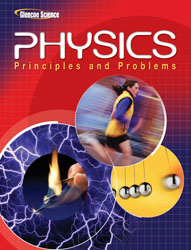1 <a onClick="window.open('/olcweb/cgi/pluginpop.cgi?it=jpg::::/sites/dl/free/0078807220/617935/ch.JPG','popWin', 'width=NaN,height=NaN,resizable,scrollbars');" href="#"><img valign="absmiddle" height="16" width="16" border="0" src="/olcweb/styles/shared/linkicons/image.gif"> (6.0K)</a> A) 7.3 × 10–16 J B) 5.9 × 10–19 J C) 6.4 × 10–21 J D) 4.8 × 10–22 J 2 14 Hz. What is the energy of a photon at this frequency?<a onClick="window.open('/olcweb/cgi/pluginpop.cgi?it=jpg::::/sites/dl/free/0078807220/617935/ch.JPG','popWin', 'width=NaN,height=NaN,resizable,scrollbars');" href="#"><img valign="absmiddle" height="16" width="16" border="0" src="/olcweb/styles/shared/linkicons/image.gif"> (6.0K)</a> A) 2.1 eV B) 2.6 eV C) 3.4 eV D) 5.8 eV 3 A) 248 nm B) 387 nm C) 434 nm D) 620 nm 4 A) Light has wave properties only. B) Light has particle properties only. C) Light has neither wave nor particle properties. D) Light has both wave and particle properties. 5 A) 1.90 eV B) 2.26 eV C) 2.72 eV D) 4.88 eV 6 <a onClick="window.open('/olcweb/cgi/pluginpop.cgi?it=jpg::::/sites/dl/free/0078807220/617935/ch.JPG','popWin', 'width=NaN,height=NaN,resizable,scrollbars');" href="#"><img valign="absmiddle" height="16" width="16" border="0" src="/olcweb/styles/shared/linkicons/image.gif"> (6.0K)</a> A) 1.4 × 106 m/s B) 2.3 × 106 m/s C) 3.9 × 106 m/s D) 5.5 × 106 m/s 7 5 m/s. What is its de Broglie wavelength?A) 0.49 nm B) 0.78 nm C) 0.88 nm D) 1.3 nm 8 A) 0.300 eV B) 0.351 eV C) 0.599 eV D) 0.702 eV 9 A) In de Broglie's model, the wavelengths of everyday objects are too short to produce observable effects. B) According to de Broglie's model, the Heisenberg uncertainty principle prevents the accurate measurement of de Broglie wavelengths. C) In de Broglie's model, the wavelengths of everyday objects are too long to produce observable effects. D) In de Broglie's model, only sub-atomic particles have a wave nature. 10 A) Scientists observed the photoelectric effect and Compton scattering. B) Scientists observed electrons being ejected from a graphite block. C) Scientists observed that only very small particles exhibit wave properties. D) Scientists observed the diffraction patterns of electrons.














